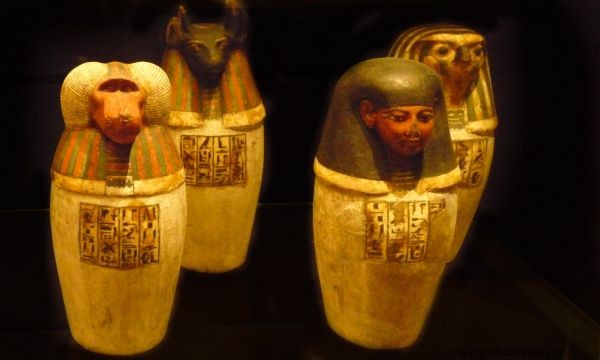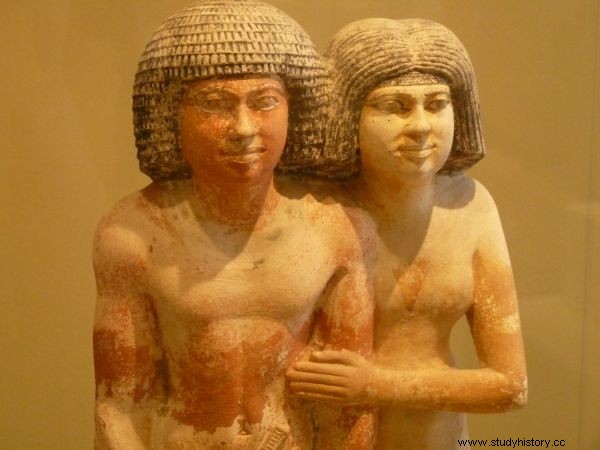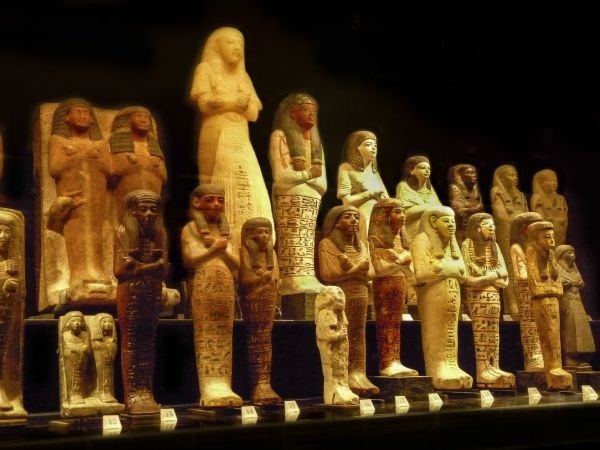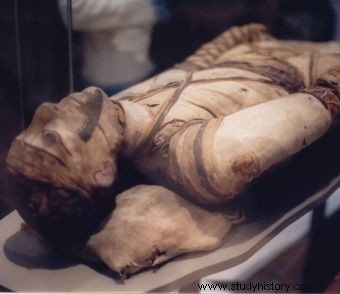Have a bad experience with a dishonest funeral director? The priest got under your skin? Or maybe a cunning undertaker made you gray? Be glad you are not living in ancient Egypt. Arranging a fair and decent burial was a real ordeal there.
The funeral industry in ancient times was governed by similar rules as today. The embalmers had their own areas where they could not be moved. If someone wanted to bury loved ones, he had to accept their terms. There are papyri in which ten Hawara embalmers, belonging to two families, swore an oath - a pledge to adhere to the boundaries of their territory. We read in it:
There are three areas (...) where we are to act as embalmer, anoint with ointment and not allow others to perform prescribed ceremonies on our behalf , any of the types in the world and the performance of the above-mentioned.
Stinky Robot
The work of embalmers was not very grateful. Embalming requires contact with secretions, chemicals and the body, not always the first freshness. All this in a ruthless, hot climate.

Four sons of Horus. Vessels where the organs of the deceased were removed from the body (photo:Kamil Janicki; Louvre in Paris).
As a result, the practice of preparing the body for the funeral had to be carried out outdoors. Usually in the hills, in tents, near water, where the wind blew the stench away. Anubis, the god of the afterlife and patron of embalmerists, had two nicknames for a reason: "The One Who Lives in the Tent" and "He who is on the hill."
Ripper - gosh!

Mummy from the collection of the Vatican Museum (photo:Sherurcij).
People specialized in their profession dealt with the process, or rather the ritual of mummification. Although they were essential to enable the dead to enter the land of death, they were treated differently.
One of the embalmers, known as the "ripper" or "slicer", was tasked with removing some of the insides (stomach, intestines, lungs, liver - the so-called "four sons of Horus") through an incision made with an obsidian knife on the left side of the abdomen. And once he did his thing, he was brutally chased away as "unclean." According to the account of Diodorus Siculian who visited Egypt in 59 BC .:
Then the so-called cutter makes an incision - according to tradition with an Ethiopian stone - and immediately runs away, all present rush after him, throwing him with a hail of stones, throwing curses at him and trying to reach his head.
In their eyes, anyone who raped or injured the body of a human of the same tribe hurt him.
Your wife died? Wait for it to rot
Some embalmers liked their work very much, especially when they handed over young, attractive girls. Necrophiles were frequent, and we receive reports of them from the ancients: Herodotus or Xenophon of Ephesus.

Funeral services. The terror of the rank and file of Egyptians ... (photo:Kamil Janicki; Louvre Museum)
The former wrote that embalmerists usually expelled necrophiles from their ranks if they caught them red-handed. The second reported the case of a man who, instead of embalming and burying his wives, decided to keep them in his bedroom. Apparently, he decided that the marriage vow was still in force.
This article has more than one page. Please select another one below to continue reading.Attention! You are not on the first page of the article. If you want to read from the beginning click here.
Warning, glitch!
The embalmers were calm about their trade, because they had no competition, and when they got the job, no one could take it away from them. The deceased had to be prepared for eternal life in accordance with the requirements of faith. Whether it was done with a professional ethos is another matter entirely.
No one had access to the corpse prior to the funeral, so relatives were unsure that they would receive the correct body. Different cadavers were prepared at the same time, so mistakes were made.

Servants' sarcophagi. There was not always enough space in them… (photo:Kamil Janicki; Louvre Museum).
Bones were broken off, damage was repaired (or not), sometimes done carefully and sometimes not very well. It was common for embalmists to break the backbone of a corpse (it was "repaired" with a stick or resin) , sometimes the long bones of the arms and legs were replaced.
Cramped coffins, chopped feet

Not everyone ended up being the perfect mummy…
Parts of the body were lost, sometimes something went wrong, something fell apart, something fell off. Of course, everything could be hidden under the rolls of bandages. Today, such "defects" can be easily exposed thanks to X-ray or tomographic examinations. An example is the mummy of seven-year-old Pedi Amon, X-rayed in 1926.
In order to stuff her into a too small sarcophagus, the embalmers stripped the boy's arms, broke his legs in half, and threw his tibia and feet away . This is an ancient-style miniaturization.

The article was based, inter alia, on the book "Mumie. Ancient Egyptians in a new light ”(Warsaw 2003).
The mummy of a young Teszat, located in the Minneapolis Institute of Arts, is also an example of a nasty fluff. Her body was brutally pushed apart during embalming, and many bones were broken. As if that were not enough, the skull of another adult person was discovered between her legs. It was probably there by mistake.
Mediocre but faithful
In the New Kingdom era, care was taken to better reproduce the appearance of the deceased. The methods, however, were quite macabre, because they were pushed through incisions in the skin of the cheeks, abdomen, buttocks and thighs. For women, also breasts, and men - penises.
Various materials were used for this:from clay and sand, through resin, to sawdust and canvas tow. They were saturated with various fragrances.
Posthumous epilation
In the budget version, instead of perfumes, there was ... an onion. It may not smell very good, but it is a natural antiseptic.

The embalmer artists paid special attention to the display of certain organs ... The photo shows a mummy figurine from the Kunsthistorisches Museum in Vienna (photo:Kamil Janicki; rights reserved).
Even Ramesses IV was given onion in the ears and sockets for eternal rest whose nostrils were also packed with onion scales, this time additionally soaked in resin.
For mummification, women had their pubic hair shaved . Sometimes mummies were also made artificial eyes of black and white stones. Well, what is it not done to look beautiful in the afterlife ...
Literature:
- Barwik, M., Book of going out during the day. Mysteries of the Egyptian Book of the Dead , Warsaw 2009.
- Brier, B., Egyptian mummies. Discovering the Mysteries of Some Ancient Art , Warsaw 2000.
- Ceram, C.W., Gods, Tombs, and Scholars , Warsaw 1987.
- David, R., Archibold, R., Mummies. Ancient Egyptians in a new light , Warsaw 2003.
- Manniche, L., Sexual Life in Ancient Egypt , New York 2002.
- Niwiński, A., Deities, cults and rituals of ancient Egypt, Warsaw 2004.
- Reid, H., In search of the immortals. Mummies, death and faith in the afterlife , Warsaw 2002.
